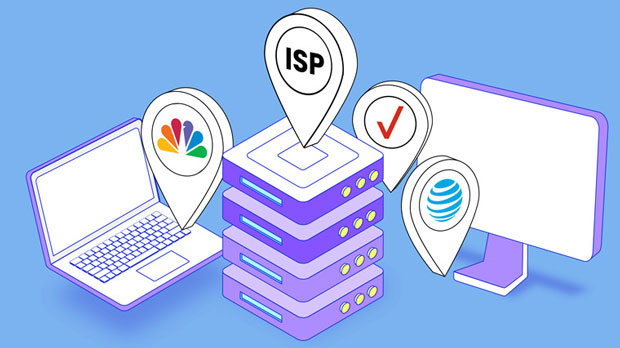residential proxy Servers have become increasingly popular for individuals and businesses that require secure, anonymous browsing. However, when deployed in high-concurrency environments, such as large-scale web scraping or data mining tasks, these proxy servers often face several challenges. High-concurrency environments demand high-performance systems that can handle multiple requests simultaneously, which can lead to problems related to network latency, resource consumption, server management, and security. 1. Scalability LimitationsIn high-concurrency environments, scalability is one of the primary concerns for Residential Proxy Servers. These proxies rely on individual IP addresses sourced from real residential locations, which are often shared by multiple users. The limitation comes when multiple users attempt to access a large number of services simultaneously, as the network of residential IPs may not scale sufficiently to accommodate the growing demand. residential proxies are typically less scalable than data-center proxies because of the constraints associated with the finite pool of available IP addresses. When many concurrent requests are made, it becomes difficult to distribute the load evenly across the available proxies, which can result in slower speeds, increased latency, and ultimately, failure to fulfill the request efficiently.2. IP Blocking and BlacklistingAnother significant issue in high-concurrency environments is the risk of IP blocking and blacklisting. Residential Proxy Servers are usually less likely to be blocked compared to standard data-center proxies since they use real user IP addresses. However, when used at a high volume, they can still trigger suspicious activity patterns. Websites and online services are becoming more sophisticated in detecting bot traffic and abuse, and if a large number of requests originate from the same residential proxy pool, these IPs are likely to be flagged and blocked.To prevent this, proxy providers need to continuously rotate IP addresses, but this can come at the cost of system performance and reliability. Excessive use of a particular IP address pool for high-concurrency tasks can also result in the entire proxy network being flagged, impacting all users relying on that specific pool of IP addresses.3. Latency and Speed IssuesLatency is another common challenge when using Residential Proxy Servers in high-concurrency scenarios. Residential proxies typically have higher latency compared to data-center proxies because the data requests are routed through household internet connections, which are often slower than commercial data centers. When dealing with high-concurrency tasks, latency becomes an even more pressing issue.In high-concurrency environments, the increased number of requests can exacerbate these latency problems, leading to longer response times and overall reduced performance. This issue can significantly affect time-sensitive tasks like web scraping, where high throughput and minimal delays are critical.4. Resource Consumption and CostAnother challenge faced when using Residential Proxy Servers at scale is resource consumption. Unlike traditional server-based proxies, Residential Proxies rely on residential internet connections, which consume more resources, including bandwidth and processing power, compared to data-center solutions. In high-concurrency environments, where thousands or even millions of requests need to be processed simultaneously, the demand for resources increases dramatically.This surge in resource usage translates into higher costs for customers, as they will need to scale up their residential proxy pools or utilize additional servers to maintain optimal performance. The higher operational cost of maintaining a robust residential proxy setup in such environments can be a major downside for many businesses.5. Security ConcernsSecurity is always a top priority when using proxy servers, but it becomes even more critical in high-concurrency environments. Residential proxies, by their very nature, involve routing traffic through third-party residential networks, which can pose potential security risks. These risks become more pronounced when handling sensitive data, as the increased volume of requests can open up more opportunities for vulnerabilities to be exploited.Moreover, malicious actors may target residential proxy pools for various reasons, such as attempting to hijack the proxy network or to perform large-scale attacks. This increases the likelihood of security breaches, especially when using proxy servers in high-concurrency, data-sensitive applications.6. Difficulty in Managing Large Proxy PoolsManaging a large proxy pool is a complex task, particularly in high-concurrency environments where efficient proxy rotation and load balancing are necessary. In a high-concurrency environment, businesses typically need to use a large number of proxies simultaneously. Keeping track of these proxies, ensuring they are working correctly, and rotating them at the appropriate times to avoid detection can be a daunting task.Furthermore, some proxy providers may not offer adequate management tools to monitor and control such large pools effectively. This can lead to inefficiencies, such as overusing specific proxies, which may result in IP bans or slow performance. Without proper management, companies can experience significant downtime or degraded service quality.7. Limited Geographic CoverageResidential Proxy Servers are designed to offer IPs from real residential networks, which means they can provide geographically diverse IPs for users. However, this diversity can be limited in certain regions. High-concurrency environments often require proxies from specific geographic areas to match the target audience’s location. When the available residential proxies do not meet these geographic requirements, businesses may struggle to provide accurate and localized services.In high-concurrency environments, businesses may need to procure proxies from various sources to cover a wide range of geographic locations. The lack of proper geographic coverage in residential proxies can be a significant limitation, particularly for tasks such as localized content scraping or regional market analysis.ConclusionIn high-concurrency environments, Residential Proxy Servers face a variety of challenges, including scalability limitations, IP blocking and blacklisting, latency and speed issues, resource consumption, security concerns, and the difficulty of managing large proxy pools. Businesses looking to implement Residential Proxies at scale need to be aware of these challenges and take proactive measures to address them. By rotating IPs efficiently, managing resources effectively, and maintaining security protocols, companies can mitigate these issues and ensure smoother operations in high-concurrency tasks.
Aug 19, 2025



































































